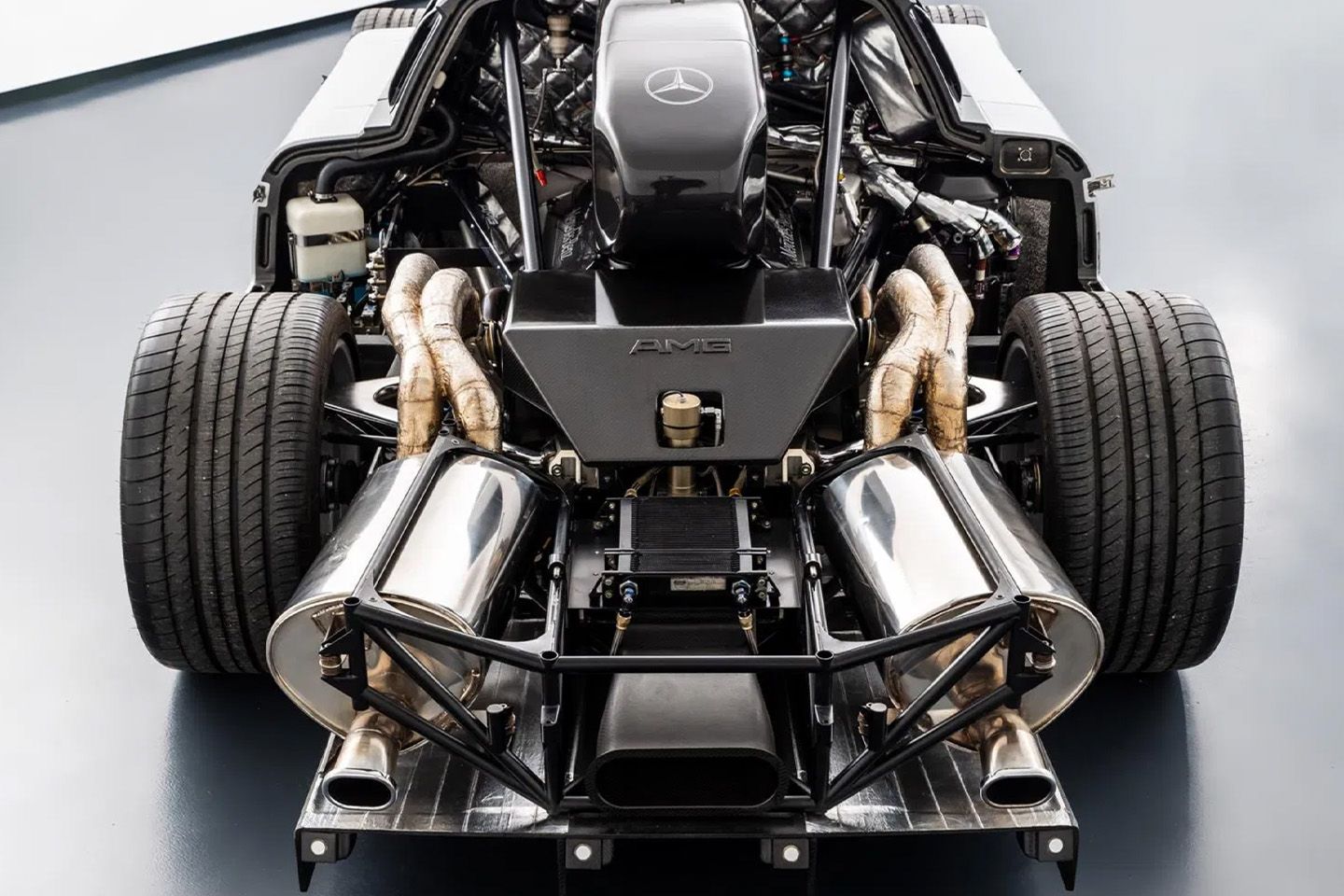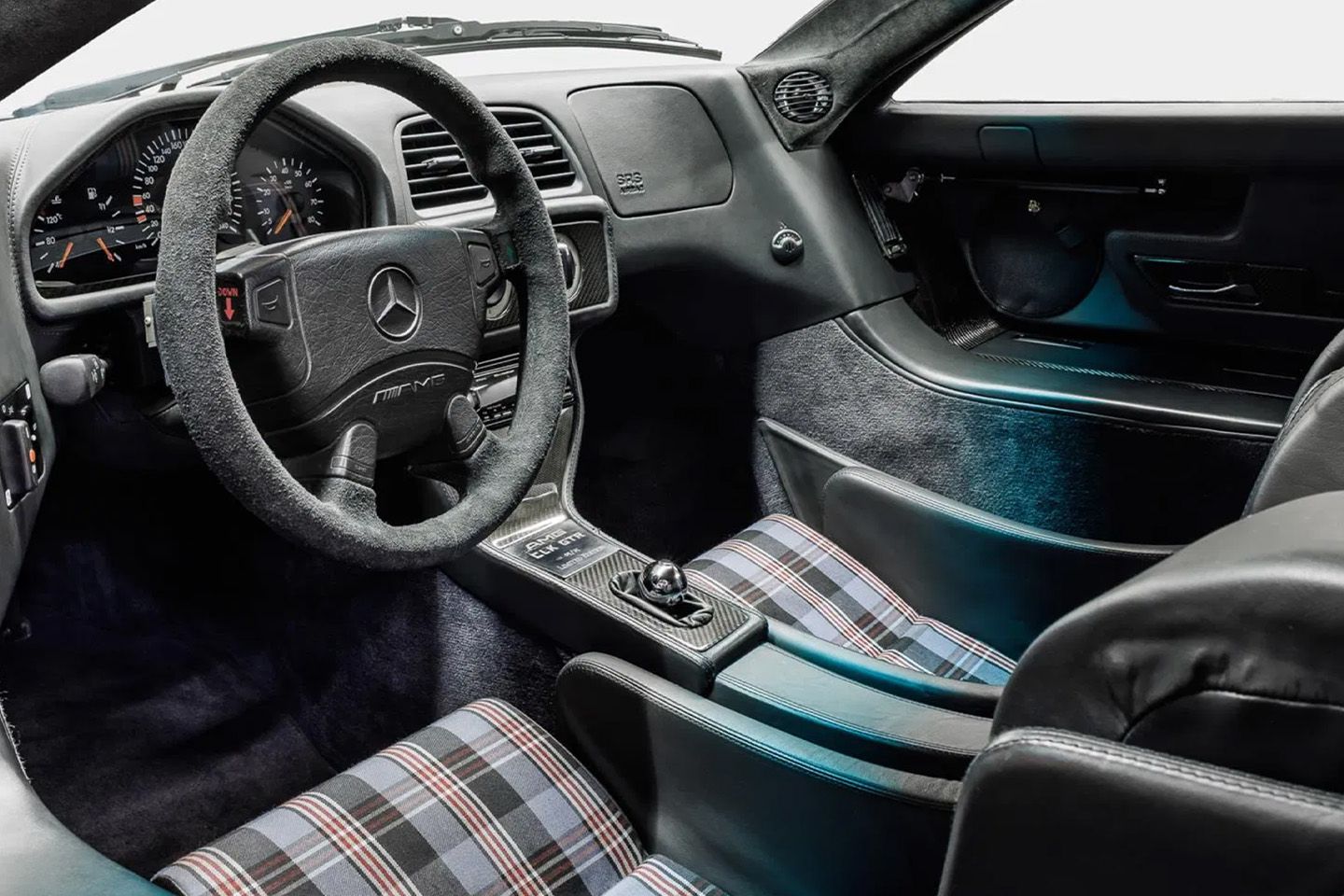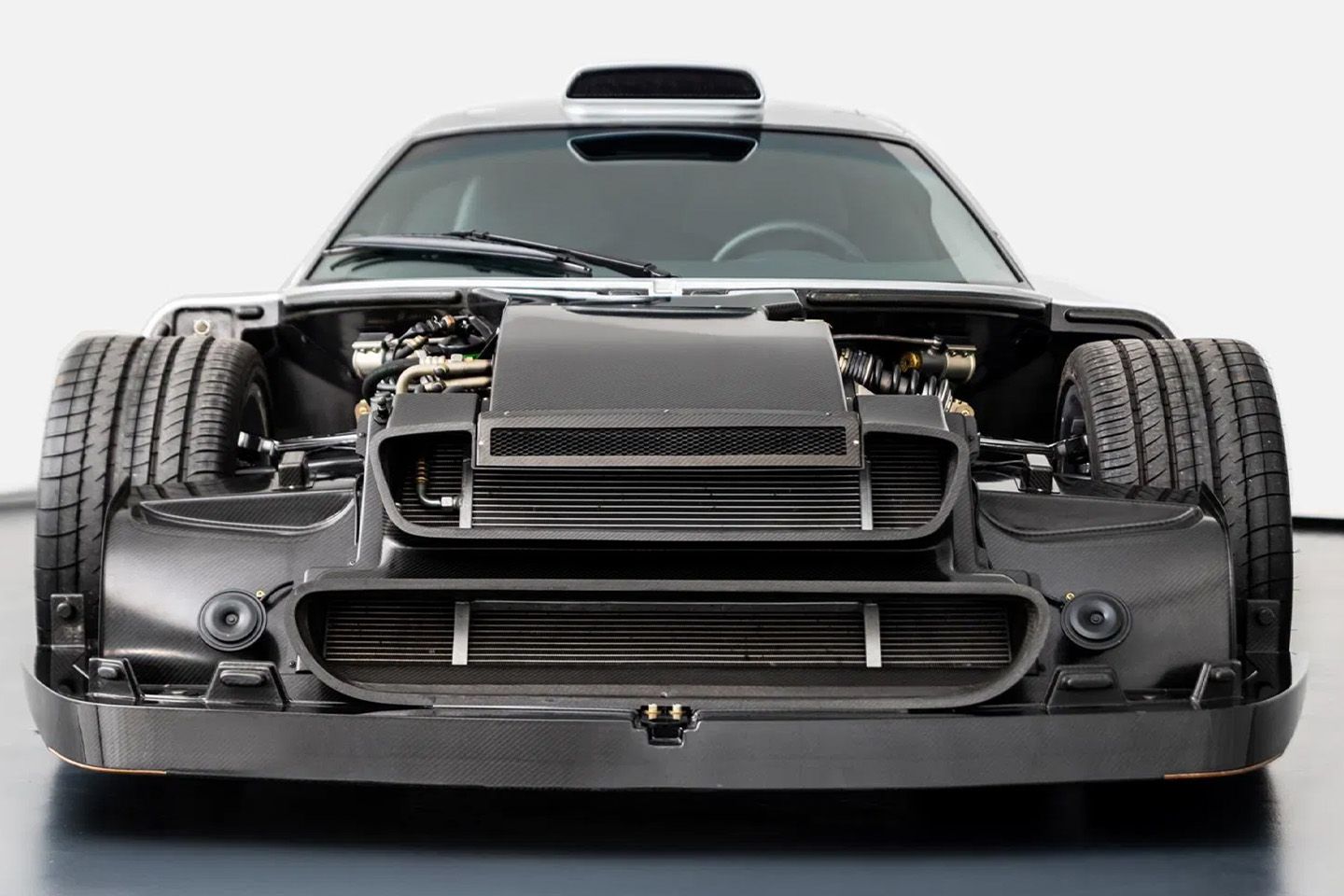Unicorn-grade Mercedes CLK GTR for sale
A Merc Le Mans prototype may well be on the cards - can it be a V12 like the last one, please?

Mercedes will return to Le Mans in June after a 26-year hiatus and, yes, it really is a very big deal. The German marque will field a trio of AMG GT3s for this year’s 24-hour epic, and there’s talk of a full-scale Hypercar assault in the not-so-distant future. If that were to happen, it’d join the likes of Porsche, Aston Martin, Ferrari, and many more in committing to the World Endurance Championship’s increasingly popular prototype regs, and prove that past demons have well and truly been put to rest.
The company has a chequered history at La Sarthe. While it has a pair of outright wins to its name, one in 1952 and the other with the monstrous Sauber C9 in 1989, it’s also been at the centre of some of motor racing’s most shocking incidents. The first of course being the 1955 Le Mans disaster, where 84 people were killed when the Mercedes 300 SLR of Pierre Levegh crashed into the spectator area on the pit straight. Then, in 1999, Peter Dumbreck’s CLR famously took off on the run down to Indianapolis, resulting in Merc’s withdrawal from the race and top-class sports car racing altogether. What a difference a couple of years make, because when it came out with the CLK GTR like this one in 1997, it had the sports car world shaking in its boots.
At the time, GT1 regulations stipulated that race cars must be based on an existing road car, which is why the grids of the era were packed with McLaren F1s, Ferrari F40s and even heavily modified Toyota MR2s. Mercedes, like Porsche with the 911 GT1 and Panoz GTR-1, decided to pour all of its resources into building the best race car possible, and worry about all the mods needed to make it roadworthy later on. The approach worked, with Mercedes dominating that year’s FIA GT1 championship by snatching both drivers’ and constructors’ titles.


Meanwhile, the road car (or Straßenversion) was about as uncompromising as a homologation specials get. The NACA duct-strewn bodywork was carried over largely unchanged, the only major difference being a smoother front splitter and a less eye-gauging rear wing, while the Ilmor-tuned V12 was stroked out to 6.9 litres, up from the race car’s 6.0-litre capacity, putting out a punchy 630hp. It even retained the race car’s sequential gearbox, with paddles behind the steering wheel to switch cogs, though it meant depressing the clutch pedal with each gear shift and a quick blip of the throttle.
This, along with the minuscule ground clearance and sheer size of the thing, made driving the GTR on public roads more stressful than diffusing a bomb. Tiff Needell took one for a spin on old (as in old old) Top Gear, gingerly driving through the German countryside before pulling off a donut in a middle of an empty town square. He couldn’t get on with it on the road, finding it far better suited to the race track. But that was then; now they’re considered one of the all-time great supercars of the late '90s, up there with the McLaren F1, Ferrari F50 and Porsche 911 GT1.
Being a homologation special means values have, naturally, gone through the roof. The seller of this example hasn’t listed a price, but one of the 20 coupes built sold at auction for $4.5m (£3.4m) back in 2018, while one of the rarer Roadsters changed hands for $10.2m (£8.2m) in 2023. Neither will be of much help, given how much the market has changed since they both went under the hammer, but just be prepared to spend somewhere between ‘several million’ to ‘tens of millions’ to get hold of it. Oh, and it’s in Germany, so if you fancy having it as part of your car collection over here, then remember to factor in import duties and the like. Or, you know, just keep it at your Monaco residence to enjoy when the sun’s out.



Too cramped (the seats don't adjust), poor visibility, a finicky transmission that needs the accuracy of a Swiss watch to operate smoothly, and it's not even that fast or powerful by modern standards.
My God I love it though.
Crazy to think that after all the effort and expense of purchasing and modifying a McLaren F1 as a test bed, developing the car from paper to completion in just 128 days and then building the road cars, it was only in competition for around 18 months before being superseded by the CLK-LM!
Ahem,
Seriously though I'd be more than happy with an XJ220 if my numbers came up. These Mercs look a bit weird to me, like they've tried to make a supercar look like one of their saloons. At the from at least.
Anyone got a video so I can hear the V12 please?
Of course the real question is why on Earth you'd have one over a tuned up Golf R and a row of terraces in Dudley

Of course the real question is why on Earth you'd have one over a tuned up Golf R and a row of terraces in Dudley

He ain't never living that post down.................
Gassing Station | General Gassing | Top of Page | What's New | My Stuff





